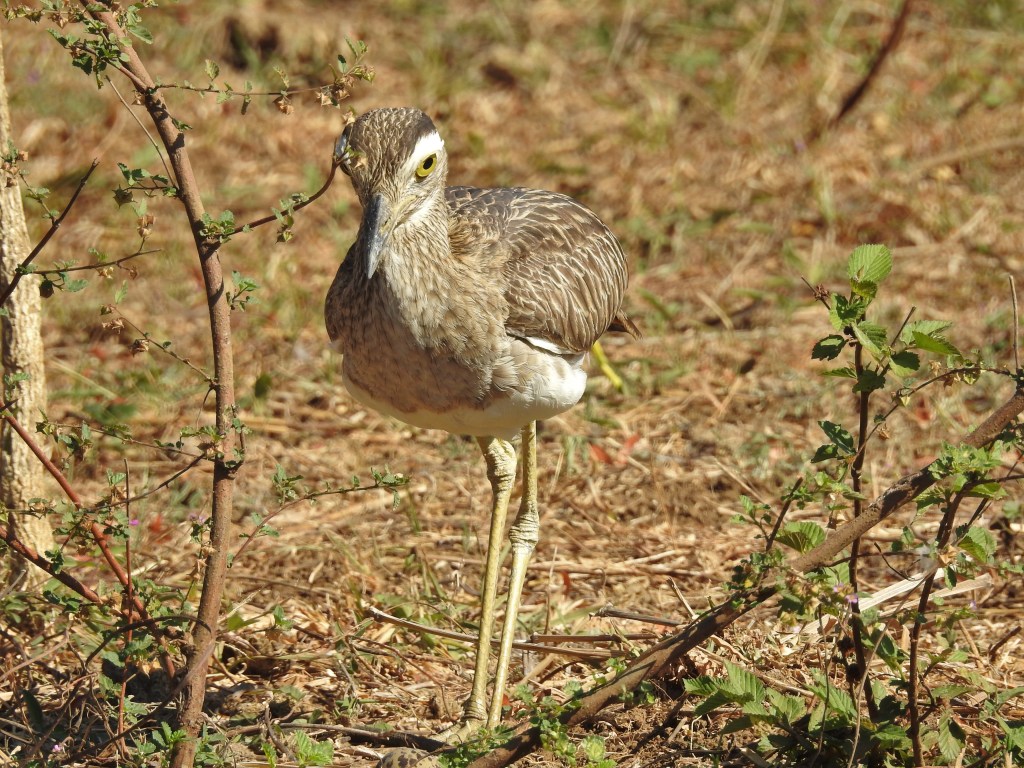Double-striped Thick-knee (Burhinus bistriatus); Alcaraván americano; Dominikanertriel; Oedicnème bistrié
Like most stone-curlews, the Double-striped Thick-knee is generally a bird of arid and open country. The appearance of this fairly large and rather strange-looking species in our still relatively well-forested and humid Turrialba is thus a welcome addition to our bird life.
Friend and guide Steven Aguilar‘s sharp eyes discovered the individual, pictured below, on the CATIE campus in Turrialba. This is only the second well-documented sighting of the species in the entire province of Cartago, despite the existence of more suitable habitat close to the city of Cartago – at Coris, for instance.
The first sighting dates back to March 2017 but has only now been reported – retrospectively and with accompanying photographs – by top-notch birding guide Mercedes Alpízar. Look for this (historical) report on eBird’s database where you will find a detailed explanation by Mercedes of the circumstances. Actually, there had also been unsubstantiated reports of the species at Angostura in August 2022, which gives us another location to scour our area! Rejoice, then, in John Beer’s following photos:

The large eyes of this species gives it a rather reptilian look and have evolved because of its nocturnal habits. During the day, when it sits or stands, motionless, it is especially hard to spot in its typically dry habitat in the northwestern part of the country. There it is actually a fairly common species. At night, when it is much more active, it may be easier to locate by listening for its strident call.
This final photo was taken back in 2017 and depicts the species in its more natural surroundings in Guanacaste:
As with the very recent local report of a Yellow-headed Blackbird, we greet with great enthusiasm this latest addition to our local bird lists. At the same time, however, the arrival of the Double-striped Thick-knee must be considered to be part of the increasing presence in Costa Rica of so many open-country species over the last several decades. Red-winged Blackbird, Southern Lapwing and our two caracara species spring to mind, along with the Cattle Egret, and the now almost ubiquitous Great-tailed Grackle, a species not seen here in any numbers until the late 1950s. As forests diminish and human populations increase, birds such as these inevitably prosper. However, despite what has happened and may continue to happen with these aforementioned species, we will certainly not be invaded by flocks of Double-striped thick-knees!



